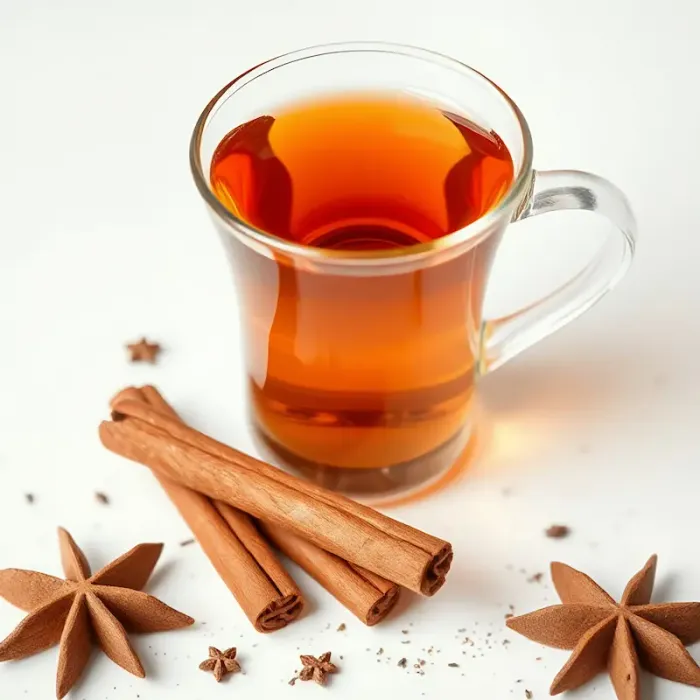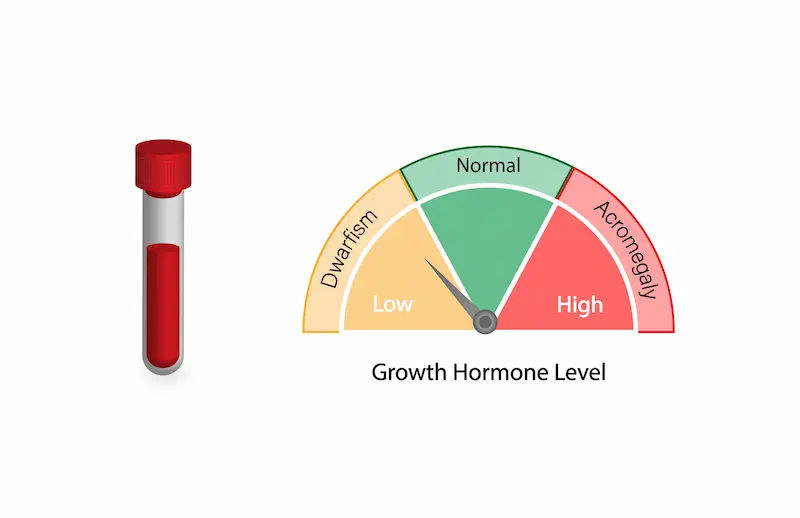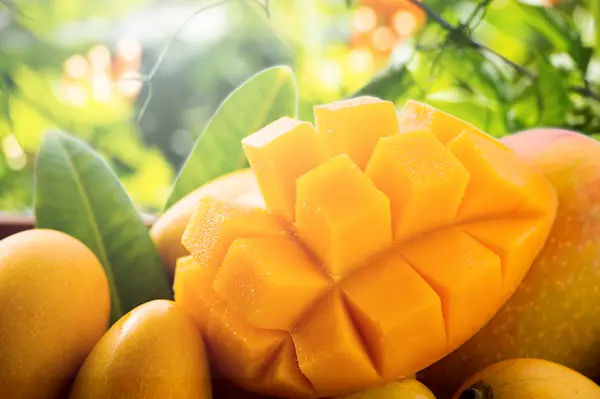Guide to Food To Relieve Menstrual Cramps
Stop period pain with food! Learn which vitamins, minerals, and anti-inflammatory foods to eat to naturally ease menstrual cramps and discomfort.


ntroduction
Menstrual cramps can be frustrating, painful, and disruptive. The good news? What you eat can meaningfully influence how you feel during your period. While pain relievers and heat packs help, the right food choices can dial down inflammation, relax muscles, and stabilize energy and mood—all of which can reduce menstrual cramps. In this practical, research-backed guide, you’ll learn how food affects cramping, which nutrients and ingredients make the biggest difference, and how to build cramp-calming meals without fuss. We’ll cover the best foods for menstrual cramps, what to limit, the evidence on supplements and herbal teas, a simple meal plan and recipes, and lifestyle tips that amplify relief. If cramps are severe or persist, we’ll also share guidance on when to see a doctor. Let’s get you a plan that’s doable, budget-friendly, and designed to help you feel better—cycle after cycle.
Why Menstrual Cramps Happen?: The Science
Prostaglandins and inflammation
Primary dysmenorrhea (cramps without another diagnosis) is driven largely by prostaglandins—hormone-like compounds produced in the uterine lining. High prostaglandin levels trigger stronger uterine contractions and reduce blood flow, causing pain and sometimes nausea, diarrhea, and headache. Prostaglandins also initiate inflammatory signaling, which heightens pain perception.
Nutrition’s role in muscle contraction and pain
Your diet can influence prostaglandin balance and inflammation. Omega-3 fats tend to produce anti-inflammatory mediators, while a pattern high in certain omega-6 oils and ultra-processed foods may tilt toward pro-inflammatory signaling. Minerals such as magnesium and calcium affect smooth muscle contraction and nerve transmission, potentially easing cramps when adequate. Antioxidants from fruits and vegetables may blunt oxidative stress that accompanies inflammation.
Unique insight: timing matters
Many people wait until cramps start to change their diet. Because the endometrium builds prostaglandins in the late luteal phase (the week before your period), shifting to an anti-inflammatory pattern 7–10 days pre-period may offer greater relief than reacting on day one. Consult a Top General Physician
How Food Can Help Period Pain?
Anti-inflammatory diet mechanisms
An anti-inflammatory diet emphasizes omega-3 fats (fatty fish, walnuts, flax), abundant fruits and vegetables, whole grains, legumes, herbs, and spices while minimizing refined starches, added sugars, trans fats, and excess alcohol. This pattern can reduce pro-inflammatory signaling and may modulate prostaglandin production, supporting menstrual cramp relief.
Micronutrients linked to cramps
Evidence suggests potential benefits from:
• Magnesium (muscle relaxation, nerve transmission)
• Vitamin D (immune modulation; RCTs show reduced pain with repletion)
• Thiamine (vitamin B1) and vitamin B6 (neurotransmitter support)
• Vitamin E (antioxidant; may reduce prostaglandin synthesis)
• Omega-3 fatty acids (EPA/DHA) [2]
Fiber, gut health, and estrogen metabolism
Dietary fiber (especially from whole grains, legumes, and cruciferous vegetables) can aid estrogen metabolism and support a healthier gut microbiome, which in turn influences inflammation. Some people also experience less period bloating when they eat consistent fiber and limit ultra-processed foods and excess salt.
Unique insight: plate balance for steadier nerves
Combining low-GI carbs with protein and healthy fats (e.g., oats + yogurt + walnuts + berries) stabilizes blood sugar, which may reduce irritability and pain sensitivity—subtle but meaningful during your period.
Anti-Inflammatory Foods and Hydration to Ease Cramps
Omega-3 stars
Aim for 2–3 servings/week of fatty fish (salmon, sardines, mackerel). Observational and interventional research links omega-3 intake with lower dysmenorrhea severity; some RCTs find omega-3 supplements reduce pain scores and analgesic use [2]. Plant sources (flax, chia, walnuts) provide ALA, which partially converts to EPA/DHA.
Colorful plants and whole grains
Eat the rainbow: berries, citrus, leafy greens, crucifers (broccoli, cabbage), tomatoes, peppers. These deliver antioxidants (vitamin C, polyphenols) and magnesium, potassium, and folate. Choose whole grains (oats, quinoa, brown rice) and legumes (lentils, chickpeas) for fiber that helps with estrogen metabolism and bowel regularity—useful if prostaglandins trigger diarrhea early in your period or if you tend to get constipated later.
Hydration and electrolytes
Hydration can help alleviate headaches and cramp intensity for some, and it combats fluid retention paradoxically by supporting kidney function. Aim for 2–2.5 liters/day from water, herbal tea, soups, and watery fruits/veg. Mineral waters rich in magnesium or calcium may offer a small bonus. Include potassium-rich foods (bananas, oranges, potatoes, spinach) to balance sodium and reduce bloating. Limit alcohol and consider moderating caffeine if you notice it worsens cramps or anxiety.
Magnesium-Rich and Mineral-Dense Choices for Relaxation
Where to find magnesium?
Magnesium helps relax smooth muscle, modulate nerve signaling, and support serotonin—all relevant to cramps and mood. Food sources: pumpkin seeds, sunflower seeds, almonds, cashews, peanuts, dark chocolate (70%+), black beans, edamame, tofu, quinoa, buckwheat, and leafy greens (spinach, Swiss chard). Pairing greens with legumes or whole grains boosts total intake.
Sample cramp-calming day
• Breakfast: Oatmeal cooked with milk or fortified plant milk, topped with pumpkin seeds, walnuts, blueberries, and a drizzle of tahini.
• Lunch: Quinoa–chickpea bowl with roasted broccoli, red peppers, olive oil–lemon dressing, and a side of orange slices.
• Snack: Square of dark chocolate (20–30 g) and a pear.
• Dinner: Baked salmon, garlicky sautéed spinach, and sweet potato.
This blend provides magnesium, potassium, omega-3s, vitamin C, and fiber—nutrients that may help with menstrual cramps.
Calcium and vitamin D synergy
Calcium supports muscle function and nerve conduction; vitamin D supports immune and inflammatory balance. Low vitamin D status has been linked to increased dysmenorrhea. In one randomized trial, a single high dose of vitamin D significantly reduced pain in women with primary dysmenorrhea. Consider calcium-rich foods (dairy or fortified alternatives, tofu set with calcium, sesame) and safe sun exposure or vitamin D-rich foods (eggs, fish), especially if you’re indoors or have darker skin.
Herbal Teas and Spices with Evidence
Ginger tea and capsules
Ginger has anti-inflammatory and antispasmodic effects. Systematic reviews suggest ginger can reduce pain in primary dysmenorrhea versus placebo and is comparable to NSAIDs in some small trials, especially when started at the onset of menstruation and taken for the first 3 days. Try ginger tea (fresh slices simmered 10 minutes) 2–3 times/day or discuss standardized capsules with your clinician.
Chamomile, peppermint, and fennel
Chamomile may have mild antispasmodic effects and can support relaxation. Peppermint can ease GI cramping if prostaglandins upset your stomach. Fennel (tea or extract) has shown promise in small RCTs, reducing pain intensity and duration; more robust studies are needed. These are generally safe teas for most people, but check interactions (fennel may have mild estrogenic activity).
Turmeric with black pepper
Curcumin (from turmeric) has anti-inflammatory properties; early studies suggest potential benefit for period symptoms, though evidence is less robust than for ginger. Combine turmeric with black pepper to enhance absorption, and include it in soups, golden milk, or curries.
Foods to Limit During Your Period
Excess salt and ultra-processed foods
High-sodium foods (salty snacks, cured meats, fast food) can worsen bloating. Ultra-processed foods often combine salt, refined flour, sugar, and unhealthy fats, which may contribute to inflammation and discomfort. Cook simple meals at home when you can, and check labels for sodium.
Refined sugar and high-glycemic spikes
Large sugar swings can aggravate mood changes and pain perception. Choose low-GI carbs (oats, barley, legumes, whole fruits) and pair carbs with protein and fat. If you crave sweets, opt for fruit-forward desserts or small portions of dark chocolate.
Caffeine and alcohol
Caffeine can increase anxiety and sleep disruption in sensitive people, which may heighten pain sensitivity; it also acts as a diuretic. Alcohol can disrupt sleep, increase inflammation, and cause rebound headaches. If you notice a pattern, taper intake in the late luteal phase and first two period days.
Myth-busting
• Chocolate is not “off-limits”: dark chocolate in moderation can be helpful due to magnesium.
• Citrus doesn’t worsen cramps—in fact, vitamin C-rich fruits can aid iron absorption and hydration.
• Spicy foods don’t universally worsen cramps; if they irritate your GI tract, choose milder options during your period.
Supplements and Special Diet Patterns
Evidence-based supplements
Research (including Cochrane reviews) suggests:
• Omega-3 (EPA/DHA): 1000–2000 mg/day can reduce menstrual pain in some people.
• Magnesium: 200–400 mg/day (as citrate or glycinate for GI tolerance) may help cramps; start in the late luteal phase.
• Vitamin D: Repletion improves pain when deficient; an RCT showed benefit with high-dose cholecalciferol under supervision.
• Vitamin E (200–400 IU) and vitamin B1 (100 mg) may help some, though evidence quality varies.
• Discuss with your clinician, especially if you take blood thinners, have kidney disease, or are pregnant.
Diet patterns
A plant-forward, low-saturated-fat diet rich in fiber may improve period symptoms. A small randomized trial found a low-fat vegan diet improved PMS and possibly cramp severity [6]. If dairy seems to aggravate you, try fermented dairy (yogurt, kefir) or fortified plant milks and monitor symptoms. For those with significant bloating, a short-term, dietitian-guided low-FODMAP approach may help GI symptoms, though it’s not a first-line strategy for cramps per se.
Safety and smart monitoring
Supplements aren’t a cure-all. Track your cycle, pain scores, and what you take. If cramps are severe, begin suddenly, or don’t improve after 2–3 cycles of dietary changes, consult a doctor. If heavy bleeding is present, iron and ferritin testing may be helpful; vitamin D status is also worth checking. Apollo 24|7 offers convenient home collection for tests like ferritin, complete blood count, and vitamin D. If symptoms persist or interfere with daily life, consult a doctor online with Apollo 24|7 for further evaluation.
Meal Planning, Quick Recipes, and a Shopping List
3-day anti-cramp meal plan (mix and match)
Day 1 (heaviest cramps):
• Breakfast: Ginger–pear overnight oats with chia, walnuts, and cinnamon.
• Lunch: Lentil–spinach soup with turmeric and black pepper, whole-grain toast, orange.
• Snack: Yogurt or fortified soy yogurt with blueberries and pumpkin seeds.
• Dinner: Baked salmon, sweet potato mash, roasted broccoli with lemon–tahini.
Day 2:
• Breakfast: Savory tofu scramble with mushrooms, bell peppers, and avocado on whole-grain toast.
• Lunch: Quinoa–chickpea–kale salad with olive oil, cherry tomatoes, and feta (or dairy-free).
• Snack: Dark chocolate (20 g) and a banana.
• Dinner: Sardine–tomato whole-wheat pasta with arugula salad.
Day 3:
• Breakfast: Smoothie: spinach, frozen berries, flaxseed, oats, kefir or soy milk.
• Lunch: Brown rice bowl with edamame, roasted carrots, and sesame–soy dressing.
• Snack: Ginger–lemon tea and a handful of almonds.
• Dinner: Chickpea–vegetable curry with turmeric, served with barley.
3 quick recipes (10–20 minutes)
• Omega-3 smoothie bowl: Blend kefir or fortified soy milk, frozen berries, spinach, ground flaxseed; top with walnuts and sliced kiwi. Long-tail keyword: omega-3 for dysmenorrhea.
• Ginger–turmeric lentil soup: Sauté onion, ginger, garlic; add turmeric, red lentils, carrots, veg broth; simmer for 15 minutes; finish with lemon and black pepper.
• Dark chocolate chia pudding: Mix chia, cocoa powder, milk/plant milk, a touch of honey; top with raspberries and pumpkin seeds.
Pantry checklist
Canned salmon/sardines, lentils and beans, oats, quinoa, brown rice, chia/flax, walnuts, pumpkin seeds, olive oil, turmeric, ginger tea, chamomile tea, dark chocolate (70%+), frozen berries, leafy greens (fresh or frozen).
Unique insight: priority-based meal prep
When cramps hit, your energy dips. Prep a base (grains + beans) the week before your period so you can assemble bowls fast with jarred sauces and a microwave.
Beyond Food: Lifestyle Habits and When to Seek Care
Heat, movement, and sleep
Heat therapy reduces pain by relaxing muscles and increasing blood flow—stick-on heat patches are convenient. Light movement (walking, yoga) can blunt pain; small trials show yoga may reduce dysmenorrhea. Prioritize 7–9 hours of sleep; poor sleep increases pain sensitivity.
Stress and mind–body
Stress amplifies inflammatory signaling and muscle tension. Short, daily practices (5-minute breathwork, guided relaxation, or a warm shower before bed) can help.
When to see a doctor?
Seek medical advice if you have severe cramps unresponsive to self-care, new or worsening cramps after years of mild periods, heavy bleeding requiring frequent pad/tampon changes, pain with intercourse, bowel/bladder symptoms, or fertility concerns. These could indicate conditions like endometriosis or fibroids. If your condition does not improve after trying these methods, book a physical visit to a doctor with Apollo 24|7, or consult a doctor online with Apollo 24|7 if symptoms are disrupting your life.
Unique insight: symptom tracking to speed diagnosis
Use a simple 0–10 pain scale and note days, bleeding, GI symptoms, and what helps. This record accelerates effective care if you need medical input.
Consult a Top General Physician
Conclusion
Food won’t eliminate every menstrual cramp, but it can shift the odds in your favor—often more than you expect. By eating an anti-inflammatory pattern rich in omega-3s, colorful plants, whole grains, legumes, and magnesium-dense foods, you support smoother muscle function, calmer inflammation, steadier energy, and better mood. Ginger tea and sensible hydration add quick wins, while thoughtful limits on salt, sugar, and ultra-processed foods reduce bloating and swings. If needed, evidence-supported supplements such as omega-3s, magnesium, and vitamin D can further help—ideally guided by your doctor and lab results. Most importantly, make it practical: prep basic ingredients before your period, aim for balanced plates, and track what works for you. If your pain persists or interferes with life, don’t tough it out. Book an online consult with Apollo 24|7 or schedule a visit to discuss possible underlying causes and tailored treatments. With the right plan, it’s possible to feel more in control—cycle after cycle.
Consult a Top General Physician

Dr. Hariprasath J
General Physician/ Internal Medicine Specialist
19 Years • MD (Gen Med), FCCP, Dip (Diabetology, UK)
Chennai
Apollo First Med Hospitals P H Road, Chennai
(200+ Patients)

Dr. Promise Jain
General Physician/ Internal Medicine Specialist
20 Years • MBBS, DNB Medicine, TDD, MNAMS, PGCDM, CCEBDM, CCMTD,PGDE Senior Consultant- Internal Medicine Head- Department of critical care Apollo Sage Hospital, Bhopal, MP Intensivist, Diabetes, Thyroid , Physician
Bhopal
Apollo Sage Hospitals, Bhopal

Dr. Ashmitha Padma
General Physician/ Internal Medicine Specialist
5 Years • MBBS, MD Internal Medicine
Bengaluru
Apollo Hospitals Jayanagar, Bengaluru

Dr. Tanmaya Kumar Sahu
General Physician/ Internal Medicine Specialist
12 Years • MBBS, MD ( Internal Medicine )
Bhubaneswar
Apollo Hospitals Old Sainik School Road, Bhubaneswar

Dr. Rajiv Kumar
General Physician/ Internal Medicine Specialist
16 Years • MBBS, M.D.
Pune
Apollo Clinic, Viman Nagar, Pune
Consult a Top General Physician

Dr. Hariprasath J
General Physician/ Internal Medicine Specialist
19 Years • MD (Gen Med), FCCP, Dip (Diabetology, UK)
Chennai
Apollo First Med Hospitals P H Road, Chennai
(200+ Patients)

Dr. Promise Jain
General Physician/ Internal Medicine Specialist
20 Years • MBBS, DNB Medicine, TDD, MNAMS, PGCDM, CCEBDM, CCMTD,PGDE Senior Consultant- Internal Medicine Head- Department of critical care Apollo Sage Hospital, Bhopal, MP Intensivist, Diabetes, Thyroid , Physician
Bhopal
Apollo Sage Hospitals, Bhopal

Dr. Ashmitha Padma
General Physician/ Internal Medicine Specialist
5 Years • MBBS, MD Internal Medicine
Bengaluru
Apollo Hospitals Jayanagar, Bengaluru

Dr. Tanmaya Kumar Sahu
General Physician/ Internal Medicine Specialist
12 Years • MBBS, MD ( Internal Medicine )
Bhubaneswar
Apollo Hospitals Old Sainik School Road, Bhubaneswar

Dr. Rajiv Kumar
General Physician/ Internal Medicine Specialist
16 Years • MBBS, M.D.
Pune
Apollo Clinic, Viman Nagar, Pune
More articles from General Medical Consultation
Frequently Asked Questions
1) What are the best magnesium-rich foods for menstrual cramps?
Great options include pumpkin seeds, almonds, cashews, dark chocolate (70%+), black beans, edamame, quinoa, and spinach. These magnesium-rich foods for cramps can support muscle relaxation and ease pain.
2) Does ginger really help period pain?
Yes, several trials show ginger for menstrual cramps can reduce pain, especially when taken at the start of bleeding for 2–3 days. Try tea made with fresh ginger or ask your clinician about standardized capsules.
3) Which foods should I avoid during period cramps?
Limit excess salt (bloating), refined sugar and high-GI snacks (mood and pain spikes), ultra-processed foods (inflammation), and alcohol. If caffeine worsens cramps, anxiety, or sleep, cut back during your period.
4) Are omega-3 supplements better than eating fish?
Both can help. Two servings/week of fatty fish support an anti-inflammatory diet for period pain. If you rarely eat fish, 1000–2000 mg/day of combined EPA/DHA may help dysmenorrhea—check with your clinician for dosing and interactions.
5) When should I see a doctor about period cramps?
If cramps are severe, new or worsening, last beyond your period, or don’t improve after 2–3 cycles of dietary changes, seek medical advice. If heavy bleeding or other symptoms occur, consult a doctor online with Apollo 24|7; they can also arrange home collections for tests like ferritin and vitamin D.




